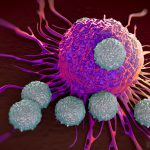During Dr. Aditi Gurkar’s first postdoctoral position at Harvard Medical School, she and her team were testing a cancer drug in young mice. The treatment worked, effectively shrinking the tumors, but when the researchers repeated the experiments in older rodents, the drug was no longer effective.

Dr. Aditi Gurkar
“This was a big wake up call for me,” said Gurkar, now an assistant professor of geriatric medicine at the University of Pittsburgh School of Medicine. “We weren’t addressing the question in the right way. The realization that age is the root cause of many diseases prompted me to switch fields from cancer biology to aging.”
Elderly people are highly prone to frailty, cardiovascular disease, cancer, arthritis, neurodegeneration and other maladies. Exactly why age makes people more susceptible to these disorders is not yet clear, but recent research suggests that age-related diseases are often preceded by weight loss.
“People typically think that aging is linked with putting on fat, which is true, but there’s a tipping point when weight gain switches to weight loss: People seem to lose weight about nine to 10 years before they develop age-related diseases. However, there hasn’t been a mechanistic understanding of the connection between loss of fat and age-related diseases,” said Gurkar, who is a member of the University of Pittsburgh/UPMC’s Aging Institute. “We think we have stumbled upon this connection.”
In a new study, published recently in Science Advances, Gurkar and her team used a grain-of-sand-sized worm called Caenorhabditis elegans to show that DNA damage — a hallmark of aging — rewires metabolism, triggering breakdown of fat deposits and production of inflammatory compounds that drive age-related disorders.
“DNA damage happens to all of us, all of the time,” said Gurkar. “Even sitting in the sun or eating that burger last night generates compounds that damage DNA. But with age, our DNA repair pathways become less efficient, and damage accumulates.”
To understand how persistent DNA damage drives aging, Gurkar and her team used C. elegans. The worm’s 20-day lifespan allows scientists to study aging without gaining too many grey hairs themselves. C. elegans shares many cellular features and molecular pathways with mammals, making insights potentially relevant to humans.
The researchers compared normal C. elegans to mutants that lacked key DNA repair genes. Unable to fix DNA lesions, the mutants accumulate damage faster than usual and experience premature aging and shortened lifespans.
By “middle age,” the mutant worms had elevated expression of genes involved in lipid breakdown and depleted fat stores compared with their normal peers. When the researchers did the same experiments in “young adults,” they didn’t observe these differences. These results indicate that accumulation of DNA damage with age rewires cellular metabolism to breakdown fat deposits.
Looking more closely, the researchers found that lipid breakdown led to elevated levels of omega-6 polyunsaturated fatty acids in the mutant C. elegans. These fatty acids are precursors for compounds called lipid mediators, which promote inflammation, a known driver of age-related diseases.
The findings could explain how shedding pounds with age can lead to development of geriatric diseases, said Gurkar. They also add weight to the idea that DNA damage is more than just a consequence of getting old: It drives aging.
“When cells recognize DNA damage, they sound an alarm, and if the damage isn’t resolved, the siren never shuts off. It’s not the damage itself, but the noise that seems to be driving aging,” she explained.
When the researchers reduced fatty acid oxidation in mutant worms, they no longer lost fat stores and normal lifespan was restored.
“By reducing fatty acid oxidation, we can inhibit inflammation and excessive fat loss,” said Gurkar. “It’s about calming the cell down so it’s no longer screaming S.O.S. all the time.”
Lipid metabolism pathways in C. elegans are shared by mice and humans, suggesting that the team’s findings could help identify therapeutic targets for age-related diseases and accelerated aging disorders. This research could also explain why pediatric cancer patients who were treated successfully with chemotherapy or radiotherapy as children often become frail and have accelerated aging by their mid-40s.
“We plan to partner with pediatric doctors to follow chemotherapy patients over time,” said Gurkar. “By measuring their DNA repair proteins, we hope to identify patients who might be more susceptible to frailty and age-related disorders later in life. This could inform tailored, or precision medicine, approaches to chemotherapy dose.”









